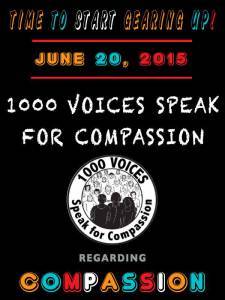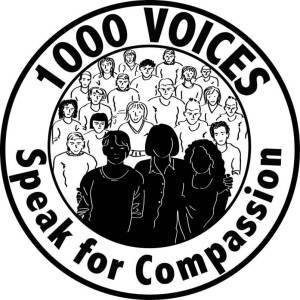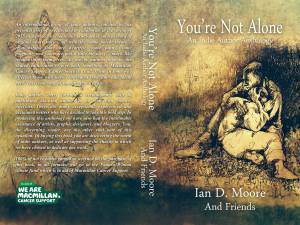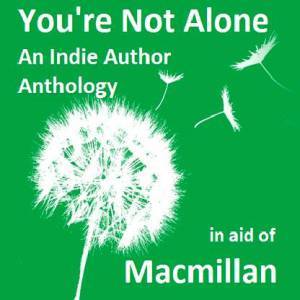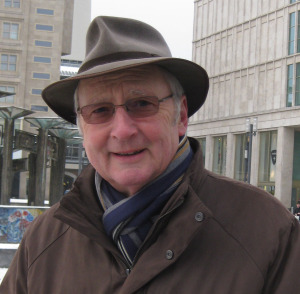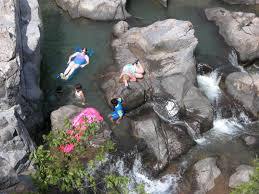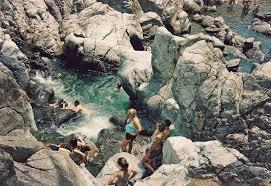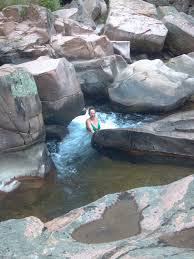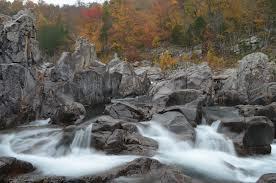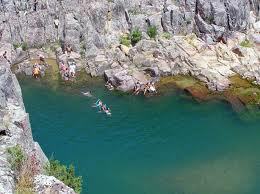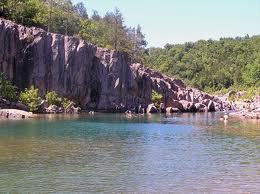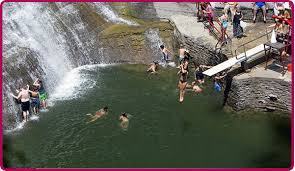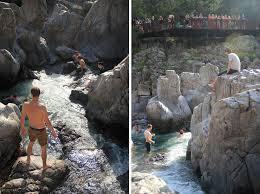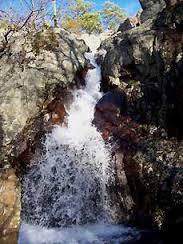Sally Ember's Blog, page 67
July 4, 2015
Why I have Always Hated Independence Day in the USA
Why I have Always Hated Independence Day (July 4th) in the USA
I am not the only one, either.
Fireworks
I could enjoy the fireworks from a great distance and up high, only. Sometimes I could get to my own or someone else’s rooftop or high window and watch from afar and admire the colors without hearing the awful noises: those I could appreciate, somewhat. But, I never forgot, even as a little girl, that these contraptions are supposed to represent bombs and I hate bombs, I hate war, and I, according to my mom and my own memories, have always hated fireworks up close. Still do.
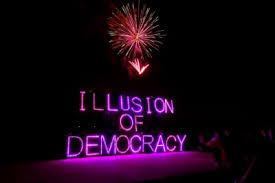
image from http://www.247newsworld.com
Troy Patterson REALLY hates fireworks: http://www.slate.com/articles/life/a_fine_whine/2009/07/fireworks_suck.html
Patriotism
I am deeply disappointed in this country and have been for as long as I can remember. How can anyone around my age (60, born in 1954), whose first clear memory of a President is the insane, lying criminal, Richard M. Nixon, be patriotic?
The USA, in the 1950s, 1960s and 1970s, drafted and then sent millions of my classmates (and they were BOYS) to their maiming, mental health breakdowns, drug addictions or deaths in Korea, Vietnam, Laos and Cambodia FOR NO GOOD REASON.
ALL the “wars” the USA has “fought” since World War II have been nothing but thinly disguised efforts to make some a-holes richer and further the political agendae of yet another group of ignorant buffoons that the people of this country keep electing.
It is shameful, embarrassing and horrible that the USA is STILL DOING THAT today in Iraq, Afghanistan, and anywhere else the war-mongers can stir up enough jingoism to get people to volunteer.
When Barbara Streisand sang “America, the Beautiful” for Bill Clinton’s campaign show, I cried. Not because it was so wonderful or she was so great, and not because I was moved by Clinton (the women-exploiting, lying sack of sh*t). No. I cried because I cannot feel what I wished I could feel: I can feel no pride and no love for a country I have lived in all my life.
Whatever does anyone have to be proud of? What is there to love besides the lands’ natural wonders (the ones we haven’t yet ruined) and the people we already care about?
The USA shows up far too low or is the lowest on the ranked lists, lowest among ALL “modern,” or “Westernized” countries, in too many categories to count. I’m talking about our ratings on handling issues that really matter, like infant mortality, educational attainment (high school graduation), child poverty, racist police violence, racist incarceration, numbers incarcerated, numbers of addicts/alcoholics, gun violence/mass shootings, domestic violence, rape, homelessness: on and on and on.
Aaron Sorkin nailed this problem (our mistaken belief in the USA as the “greatest country in the world”) in the rant he wrote for Jeff Daniels’ news anchor character to give in the HBO TV show, Newsroom (responses start after audience-member’s question at 3:10; Daniels’ actual rant begins at about 4:40): https://www.youtube.com/watch?v=Rpn0vh2Rj0Y or https://youtu.be/Rpn0vh2Rj0Y
Are YOU an American and proud? How? I really want to know how you reconcile the actual dismal facts of this country’s historical record and current terrible policies and behaviors around the world with your desire to be a patriot: they don’t make enough booze in the world to drown out the noise of that cognitive dissonance for me.
Celebrating War
At its core, Independence Day, July Fourth, celebrates the Revolutionary War and the newly formed United States of America’s “victory” in it. As a lifelong pacifist who abhors violence and would avoid it in every case, except as a last resort or best tactic to prevent further harm and death (as in World War II), I deplore all uses of violence and especially warfare.
Scotland recently had a VOTE to determine whether or not it should become independent from Britain. Did anyone consider that option in 1776? I highly doubt it. Maybe it wouldn’t have worked; we can’t know. But I do not want to celebrate the deployment of violent methods to achieve something that may well have been attainable by nonviolent means and certainly was not necessary.
Hundreds of thousands of people died in the USA’s Revolutionary War and subsequent wars of “independence” around the world, due to the USA’s “shining example.” I am as ashamed of all of those wars as if I had started them myself.
I also DO NOT SUPPORT THE TROOPS who currently serve in the USA military, since they serve as volunteers who decided to go kill people the USA and its deluded allies have no business killing, to destroy and steal property we have no business wrecking, and otherwise to wreak havoc in other people’s countries FOR NO GOOD REASON.
These “wars” have NOTHING to do with the attacks on the USA on 9/11/01 and have actually increased the terrorism in the world rather than helped it abate. If you don’t believe me, look at the rise in terror attacks and the growth of ISIS. How else do you explain those?
No one made them go. No one should have volunteered. If no one had volunteered, the “war efforts” would have died in one year or a few months. Truly.
NO ONE should have volunteered. Period.
Why would ANYONE “support” those “troops” and these activities? I really want to know.
The USA’s “image” or “brand” has been “slipping” in the world everywhere but Western Europe for over a decade because of our hypocrisies, torture training centers and usage of torture, pollution and degradation of the planet’s resources due to corporate greed and war-mongering at others’ expense. http://www.pewglobal.org/2014/07/14/chapter-1-the-american-brand/
That is another reason NOT to “celebrate” this country on July 4th.
Gratitude and Wishes
Whom am I grateful to? Bradley/Chelsea Manning. Julian Assange. Edward Snowden. Bernie Sanders. Daniel Ellsberg. Karen Silkwood. Rosa Parks. Bree Newsome.
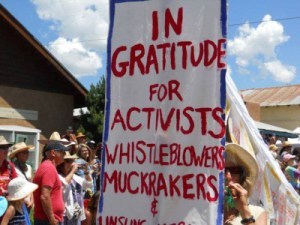
image from: http://www.globalresearch.ca
I Wish…the USA would join the world in better living and cooperation. Start with these:
–Sign the nuclear non-proliferation agreement.
–Provide universal healthcare for all citizens in the USA for free.
–Provide college educations at public universities to all students for free and eliminate/forgive ALL student loan debt right now.
–Sign the reduction in land-mines agreement.
–Sign the reduction in carbon emissions agreement.
–Sign all treaties that attempt to stop human trafficking, sex slavery, child abduction and forced human drug smuggling from occurring.
–Improve and provide housing, alternative health care, better education, enough food and actual public safety (better policing) for ALL our own citizens.
–Model caring, democratic living for the world.
–Stop all forms of discrimination based on religion, appearance, gender, sexual orientation, and other types of social identities.
–Stop all forms of rape, sexual attacks and domestic violence by enforcing the existing laws and making better ones everywhere.
–Reduce child abuse and child poverty by providing more opportunities for jobs and meaningful employment at living wages for all citizens who want to and are able to work.
–Provide free childcare and pre-school to all children.
–Stop all armed conflicts, destroy all mass weapons we own and stop producing them.
–Repurpose the military budget to serve our citizens better (see above).
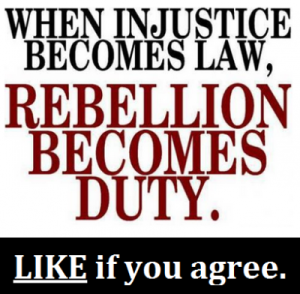
image from: http://kellidgordonlibertyblog.wordpress.com
What do you wish? Comment here. http://www.sallyember.com/blog
Best to you on this weekend, whatever you’re doing. I wish I could celebrate. Instead, I will meditate on world peace.
Filed under: Opinions, Personal stories, Politics Tagged: 4th of July, anti-war, bombs, fireworks, Fourth of July, Independence Day, jingoism, July Fourth, pacifism, patriotism, peace, USA, war







July 3, 2015
Amazon May Pay Authors $0.006 per Page Read
My take on the #Kindle Unlimited (#KU)/Borrows #compensation kerfluffle on #Amazon…
The problem is actually this: *Kindle Borrows should be set up to reflect the length of what is being borrowed!* #Authors who write longer works (and work harder) should be paid more.
A novel-length “book” needs to be defined. I propose 60K – 80K words as the minimum cut-off for a novel-length book.
Go down by 20K and get a Novella, from 40K – 59,999 words.
Go down 20K – 39,999 words and get a “novellette.”
Anything shorter than 20K is a short story.
Or, come up with a similar schematic.
A “novel” should be credited differently than a “novella” or a “novelette” or a “short story” or something even shorter, progressively less by the length of the work.
Then, readers read what they want, no policing by length of time lingering on a page or number of pages “liked.”
What do you think?
 Originally posted on readers+writers journal:
Originally posted on readers+writers journal:
 Authors of Shorter Works May Lose Out in New Kindle Unlimited Plan
Authors of Shorter Works May Lose Out in New Kindle Unlimited Planvia The Guardian
Self-published authors could be paid as little as $0.006 per page read under new rules planned by Amazon.
Writers who make their works available through Amazon’s Kindle Owners Lending Library, and a similar service called Kindle Unlimited, will no longer be paid per copy downloaded following a move announced last week.
Instead, they would receive a payment based on how many pages had actually been read, with longer books receiving a higher potential payment than shorter works.
In an email to authors, sent on Wednesday, Amazon revealed exactly how little that payment would be.
The company said that customers of its two services read nearly 1.9bn pages in June, while it expected to pay at least $11m a month for June, July and August.
That means the payment per page read could be as low…
View original 420 more words
Filed under: Writing







50 Questions to Ask Yourself About Your Author Platform
Thanks for posting, Dear Ape. Self-assessments for #authors’ #bookmarketing efforts: great idea!
 Originally posted on Chris The Story Reading Ape's Blog:
Originally posted on Chris The Story Reading Ape's Blog:
To read this detailed and highly informative post by the Ami Team,
Click on the image or link below:
50-questions-to-ask-yourself-about-your-author-platform/
Filed under: Writing







June 30, 2015
Part II: Science Alert, Serious Wonder, Brain Pickings Weekly and Cosmos Up
Part II: Science Alert, Serious Wonder, Brain Pickings Weekly and Cosmos Up
[All three posts in this series have the same introduction, but I choose info from each of the four science compilation sites separately for each post. This post focuses on gleanings from Serious Wonder and Brain Pickings Weekly]
INTRO: I should have been a research scientist. I love science. I’m extremely intelligent, determined, creative, and organized. I coulda been a contenda for a Nobel prize. That’s my story and I’m stickin’ to it.
Why am I not a scientist? I had a series of misogynistic (one of my teachers hated the four girls in my advanced science class so much he would pith [paralyze] the frogs by holding them in the air directly in front of one of us so that each frog would urinate on our blouses), anti-Semitic (another one wore his “John Birch Society” pin to school every day, displayed prominently on his lapel; there were three girls in my class and he insulted each of us daily), incompetent (in an lab accident at his “real” job, this poor man had lost most of his sight and drive and spent each class time mostly ignoring all of us) and otherwise horrible science teachers in 8th, 9th, and 10th grades.
With better teachers in those critical years, my life could have turned out very differently. Those terrible teachers turned me so far off science I only took one more “hard” science course (because it was required, in undergraduate college), despite many more years of education, through getting a doctorate.
As an adult, I became enthralled with quantum physics, health/anatomy, nutrition, child development/learning and the multiverse/astrophysics, so I read. A lot. I also watch documentaries. I am not even close to understanding some of the physics stuff, but the rest I got quite adept at utilizing. To “keep up,” I subscribe to many science-oriented blogs and curation sites.
My favorites are: Science Alert, Serious Wonder and Cosmos Up. I also subscribe to Brain Pickings Weekly, which I include in the Serious Wonder post. I will excerpt from some of the “best of the best” of what I’ve recently perused. Part II is all from Serious Wonder.
I hope you enjoy! Go subscribe!
Astrophysics and Quantum Physics/Mechanics
1. 9/11/14, Your Cosmic Address, BY STEPHEN P. BIANCHINI of Serious Wonder
When you were younger, didn’t you sometimes write your “return” address in a similar way? Well, now you have a more exact way to locate yourself…In case you send mail to aliens, for example.
“…[T]his is the cosmic address you may want to use: Earth, Solar System, Milky Way, Local Group, Virgo Supercluster, Laniakea,” in case someone not from this planet needs to know.
What/where the heck is “Laniakea,” and why do we not already know about it?
Astronomers informed us recently about “the large-scale structure of the Universe” which has “…four huge areas identified so far: Laniakea, its neighbouring Perseus-Pisces supercluster, and two other superclusters, Shapley and Coma, on the far side of the universe.”
Elmo Temple from Estonia explained: “‘[The name Laniakea]… is taken from the Hawaiian words lani, which means heaven, and akea, which means spacious or immeasurable.'”
So, time to re-do those multiverse business cards, eh?
2/1/15, The Absurdity of Infinity: Astrophysicist Janna Levin Explains Whether the Universe Is Infinite or Finite in Letters to Her Mother , by Maria Popova of Brain Pickings Weekly
It is so illuminating for the rest of us when highly intelligent, inquisitive people ruminate on deep questions and share their thoughts with us, isn’t it?
“In 1998, while on the cusp of becoming one of the most significant theoretical cosmologists of our time, mathematician-turned-astrophysicist Janna Levin left her post at Berkeley and moved across the Atlantic for a prestigious position at Cambridge University. During the year and a half there, she had the time and space to contemplate the question that would eventually become the epicenter of her career — whether the universe is infinite or finite. What began as a series of letters to her mother, Sandy, eventually became an unusual diary of Levin’s ‘social exile as a roaming scientist,’ and was finally published as How the Universe Got Its Spots: Diary of a Finite Time in a Finite Space (public library) — a most unusual and absorbing account of the paradoxes of finitude.”
From Levin’s book/letters: “‘We’re all intrinsically of the same substance. The fabric of the universe is just a coherent weave from the same threads that make our bodies. How much more absurd it becomes to believe that the universe, space and time could possibly be infinite when all of us are finite.'”
Levin concluded: “‘I welcome the infinite in mathematics, where … it is not absurd nor demented. But I’d be pretty shaken to find the infinite in nature. I don’t feel robbed living my days in the physical with its tender admission of the finite. I still get to live with the infinite possibilities of mathematics, if only in my head.'”
Where do you stand on the multiverse as infinite-not infinite subject? I tend to veer way from her inescapable logic into the infinite possibilities of the multiverse, but where each of the versions of the universe so conceived is probably finite.
Child Development/Learning
3. 9/11/14, Telepathy is now a Thing, Thanks to Technology , BY B.J. Murphy of Serious Wonder
It warms my telepathic heart-mind when tech geeks prove what the rest of us with E.S.P. already know!
“As experiments like the one above show, telepathy is a very real concept which need be aided by our own innovations – the creation of techno-telepathy.”
“Could you imagine what our world will transform into when our predominant means of communication is via thought? Everything will change fundamentally, from our markets to our governance.”
Then they have to go and ruin it, with scare tactics….
3/8/15, This Idea Must Die: Some of the World’s Greatest Thinkers Each Selects a Major Misconception Holding Us Back, by Maria Popova of Brain Pickings Weekly
I ADORE this book, which “Edge founder, John Brockman, collected by posing his annual question — ‘What scientific idea is ready for retirement?’ — to 175 of the world’s greatest scientists, philosophers, and writers,” and the accompanying article/review. So inspiring!
Here is my favorite excerpt, based on the responses from one of my favorite scientists, biological anthropologist, Helen Fischer, “…who studies the brain on love….[She] points to romantic love and addiction as two concepts in need of serious reformulation and reframing — one best accomplished by understanding the intersection of the two. Fisher argues that we ought to broaden the definition of addiction and do away with science’s staunch notion that all addiction is harmful. Love, she argues, with a wealth of neurobiological evidence in hand, is in fact a state that closely resembles that of addiction in terms of what happens in the brain during it — and yet love, anguishing as it may be at times, is universally recognized as the height of positive experience. In that respect, it presents a case of ‘positive addiction.’…'[B]esotted lovers express all four of the basic traits of addiction: craving, tolerance, withdrawal, and relapse.’”
And, even though this excerpt belongs in my post’s section on quantum physics and the astrophysics, above, I had to put it here, since it comes from this article:
“Science writer, Amanda Gefter, takes issue with one particular manifestation of our propensity for oversimplification — the notion of the universe. She writes: ‘…[T]here’s my universe and there’s your universe — but there’s no such thing as the universe.'”
An expansion of many of my own thoughts on a variety of subjects and more than I could ever have thought of on others await me. Gotta get this book!
Anatomy/Biology/Zoology and Gender
5. 4/18/15, AIR SHEPHERD: ANTI-POACHING DRONES SEEK CROWDFUNDING, BY B.J. MURPHY of Serious Wonder
I’m not a fan of drones (given most of their current uses, but this is a great idea! To protect elephants, rhinos, and other endangered species: “‘We fly drones, unmanned aerial vehicles (UAVs) that have infrared cameras and GPS on them and can send back thermal images of animals . . . and poachers.’ – Air Shepherd.”
Air Shepherd‘s crowdfunding campaign deadline has passed (April, 2015), but the goal was not met and they would appreciate donations at any time: https://goo.gl/hfi9u1 for the IndieGogo page and more info, including http://www.AirShepherd.org for the website itself.
3/8/15, The Best LGBT Children’s Books: A Sweet and Assuring Celebration of Diversity and Difference, by Maria Popova of Brain Pickings Weekly
As a parent, a bisexual, a feminist and a long-time educator, I am extremely committed to enlarging perspectives, particularly for young children. This list of excellent children’s books on gender, sexual orientation and other related “differences” whose authors embrace diversity in all its guises makes me very happy since it helps many who work with and raise children to find great reads on these important topics.
Plus, who doesn’t love Maurice Sendak’s books, regardless of your age and politics? We lost one of the 20th Century’s greatest writers for children (and adults) when he passed recently.
Books in this list were published in the 1990s and afterwards and range to one about gay penguins, a grandmother who speaks about lesbians to a granddaughter who asks, a prince seeking a spouse (not a bride, as it turns out), a gay human father and more. Each has excellent illustrations, demonstrates acceptance values, and provides the types of dialogue and storylines adults will be glad to read and re-read to the young children until they can read them on their own.
You might think this list of children’s books doesn’t belong in a post about “science,” but science includes advances in social and emotional health, right? Include these books in every library, school, daycare facility, summer camp and home and we’ll see a huge rise in the mental health of LGBT youth and a great increase in the number of LGBT Allies as well.
Health and Nutrition
7. 2/1/15, How Playing Music Benefits Your Brain More than Any Other Activity, by Maria Popova of Brain Pickings Weekly
I am a musician. I come from a family of musicians. My son and his father are musicians. Many of my lifelong and new friends are musicians. I am currently helping two kids (ages 7 & 11) learn about music and to play the piano. I have been a paid accompanist, musical director and songwriter. To say I believe in the value of music would be a vast understatement, but this article about the health benefits of music encourages and uplifts me enormously, particularly since I am in the unexpectedly long process of recovering from a Traumatic Brain Injury (TBI)/concussion which occurred over a year ago.
According to the latest research: “…[P]laying music benefits the brain more than any other activity…[and] it impacts executive function and memory…” which are two of the areas most affected in me by my recent TBI.
I love the way musician/author, Glenn Kurtz, explains in his book, Practicing, exactly in what ways playing (not just listening to) music improves our brains: “‘Because making music also involves crafting and understanding its emotional content and message, musicians also have higher levels of executive function — a category of interlinked tasks that includes planning, strategizing, and attention to detail, and requires simultaneous analysis of both cognitive and emotional aspects.
“‘This ability also has an impact on how our memory systems work. And, indeed, musicians exhibit enhanced memory functions — creating, storing, and retrieving memories more quickly and efficiently. Studies have found that musicians appear to use their highly connected brains to give each memory multiple tags, such as a conceptual tag, an emotional tag, an audio tag, and a contextual tag — like a good internet search engine.'”

Brain Pickings Weekly
Brain Pickings Weekly
Look for Part I, published on June 1, which focused on info gathered by Alert.
Next, look for Part III in late July, info from Cosmos Up.
Filed under: Science Tagged: anatomy, astrophysics, biology, bisexual, child development, children's literature, diversity, education, feminist, gender, health, learning, multiverse, musician, nutrition, quantum mechanics, quantum physics, Sally Ember, science fiction, Serious Wonder, sexual orientation, The Spanners Series, zoology







June 28, 2015
Self-Publishing: Carnival of the Indies Issue #57
Thanks, Ape! Great stuff for #indieauthors!
 Originally posted on Chris The Story Reading Ape's Blog:
Originally posted on Chris The Story Reading Ape's Blog:
This article / Magazine is CHOC-A-BLOCK with links to great articles,
tips, etc, that will keep you busy for today and the rest of the week
:D
To read and access them all, click on the image or link below:
publishing-carnival-of-the-indies-issue-57
Filed under: Writing







June 27, 2015
Abused Children May Get Unique Form of PTSD
Most significant part of this important research, so far, on the long-term and possible genetic effects of #childabuse: “Whether these genetic markers can reliably be related to childhood trauma and then used to help guide treatment, isn’t clear yet. But the results suggest that such refined strategies might at least be possible. Depending on the patient’s experience, for example, trauma linked to childhood abuse may respond better to certain drugs acting on one pathway, while adult-onset trauma, such as being a victim of rape, might require targeting a different set of genes or proteins. The more we understand how trauma does harm, the better able we will be to reverse the damage or even actually prevent it from causing disease.”
 Originally posted on Health & Family:
Originally posted on Health & Family:
Child abuse scars not just the brain and body, but, according to the latest research, but may leave its mark on genes as well.
View original 965 more words
Filed under: Writing







June 20, 2015
For #1000Speak for #Compassion: What Compassion Means to Me
Today is the second date of this year for bloggers and posters all over the world to join this growing movement, #1000Speak for #Compassion by posting a response to: “What does compassion mean to you?”
For #1000Speak for #Compassion: What Compassion Means to Me
My first empowering Tibetan Buddhist teacher, the late His Eminence Chagdud Tulku Rinpoche, taught frequently on the topic of compassion because, as he said in every teaching I ever attended of his, motivation is the the most important part of anyone’s practice, with an emphasis on bodhicitta, “the awakened heart,” which means spontaneously emanating compassion. Compassionate motivation ought to be at the forefront of every thought, word, and action for everyone who has taken Refuge with a Buddhist teacher.
This is important because the surface Refuge vow, not to harm, does not seem to include any motivation or intention within it. Yet, it does; it must.
For Buddhists, to experience Compassion is to have the heartfelt wish to alleviate all other beings’ suffering, which we do as best we are able in every moment.
In contrast, to Love another is to put that being’s happiness (not temporary, mundane happiness, but ultimate, liberation-from-delusion-and-suffering-type-happiness) above our own.
There are pitfalls, especially for Westerners, which many Buddhist teachers explain and admonish us about.
—“Idiot compassion” is ill-advised. This type of response is reactive, gooey, “Awww” at a kitten video on YouTube feeling, or pity: not actual compassion at all. See above definition for a refresher. It also encourages the acceptance of what ought never to be accepted by being misguided as to what compassion entails. People who do harmful things must face the consequences. We can feel compassion toward them WHILE exacting appropriate measures to ensure they do no further harm.
—“Enabling” is not loving or compassionate action, yet putting others’ ultimate happiness above our own can sound like a recipe for co-dependence. The practitioner must be able to discern between aiding someone to attain some kind of superficial, temporary, mundane pleasures and assisting someone to gain ultimate, spiritual liberation: only the latter is the kind of happiness we strive to accomplish for/with others.
—Pity is not compassion (see above). This is more complex than it may appear, however, because pity requires a hierarchy: “I am above you, I am better (off) than you, and therefore, I am in a position to judge, assess, and perhaps help you” and “I feel sorry for you (sympathy)” are those scripts.
—Contrast pity with actual compassion: “I feel with you (empathy). I have been and sometimes still/often are where you are now. We are more the same than different. When I am able to help you, I do so knowing that I, too, frequently need similar help.”
—Without compassion for oneself, it is impossible to feel genuine compassion for others. Self-compassion is not self-indulgence, however, and does not absolve one of taking responsibility, being accountable and striving to improve oneself at all times.
—Compassion includes no “free pass.” Feeling compassion towards someone does mean we excuse or accept their every word, action or intention as wonderful. We can maintain our ability to evaluate others’ actions and work to prevent future harm WHILE we feel compassion for their situation and confusion. See above, for “idiot compassion.”
—Meditation on exchanging-self-for-other is the key to experiencing spontaneous compassion for all beings. This means that we learn to see ourselves as the same as all other living beings: fundamentally wanting the same things and living in bodies unite us. At first, we pray to experience compassion for all, but usually, we feel compassion primarily for those we already care about and love. Therefore, in our practice, we state that we do feel compassion for all beings, even when we don’t. Eventually, with sufficient practice, we spontaneously feel nonjudgmental, evenly spread compassion for all beings, regardless of their status, condition, relationship to us, or location.
I have noticed a dramatic rise in my ability to feel compassion, even for the most heinous criminals, horribly harmful people, by remembering two things:
1. This being is merely trying to be happy, but because of karma and experiences, is completely confused as to how to achieve that and actually works against that goal, making their own misery and misery for others as well as bad karma.
2. This being and I are connected, as all beings are connected: somewhere, sometime, in some physical form or another, we have been/are each other’s mothers.
WORKS EVERY TIME.
I wish you all the best and may all beings benefit.
Filed under: Gratitude, Life lessons Tagged: #1000Speak, Buddhism, Buddhist, compassion, empathy, idiot compassion, kindness, meditation







June 18, 2015
You’re Not Alone: An Indie Authors Anthology in aid of Macmillan Cancer Support Group
You’re Not Alone: An Indie Authors Anthology
in aid of Macmillan Cancer Support Group
is now available for pre-orders. Release date: 7/15/15!
[I am promoting this excellent compilation for a great cause. Info below. I’m NOT one of the authors, FYI, just helping out.–Sally Ember, Ed.D. http://www.sallyember.com]
The following info comes directly from their “Press Pack”:
What is You’re Not Alone?
“An international group of #indie #authors, inspired by the personal grief of one, decided to collaborate in the spring of 2015 in a project to create this multi-genre smorgasbord of original short stories, all with the same potent theme – relationships. Some are heartfelt, some funny, some poignant, and some are just a little bit scary – much like relationships themselves. All are by authors fired by the shared enthusiasm to give something back in aid of Macmillan #Cancer Support. Cancer touches us all. It has in some way affected those who have contributed their time and talent here. This is our way of showing that we care.
“Indie authors carry forward a revolutionary shift in publishing, which allows the author to be creative director in their own work. There are many exceptional, experienced and acclaimed writers who have decided to take this bold step in publishing. In producing this anthology, we have also had the inestimable assistance on board of artists, graphic designers, and bloggers – all of whom have a place in our acknowledgements. You, the discerning reader, are the other vital part of this equation. By buying this book you are supporting the work of indie authors, as well as discovering their worth. You are also supporting the charity to which we have chosen to dedicate our work.”
100% of the royalties earned or accrued in the purchase of this book, in all formats, will go to the Pamela Winton Tribute Fund, which is in aid of Macmillan Cancer Support.
Worldwide Links for You’re Not Alone: An Indie Author Anthology
http://smarturl.it/YoureNotAloneAnth
http://bookshow.me/B00Y5RCOOE
The above links will take readers to the Amazon store in their country of registration from anywhere in the world.
“Artist Christine Southworth’s original sketch interpretation…is quite simply, amazing. So talented.”
TABLE OF CONTENTS
01. A YEAR AFTERWARDS By Lesley Hayes
10. CLOSURE By BL Pride
19. COLIN AND SANDY By Anthony Randall
29. ONE OF THOSE DAYS By Ian D. Moore
37. DOLPHINS DANCE By Mike Billington
51. A SPECIAL EVENING By D. Avraham
59. AT THE HANDS OF THE HEALER By Sallyann Phillips
67. DAD By Kayla Howarth
77. FOREVER YOURS By Christoph Fischer
87. FRUITS By Phyllis Edgerly Ring
91. THE YOGA BOWL By Felipe Adan Lerma
96. LILIES FOR THE MANTEL By Sylva Fae
102. GABRIEL AND THE MINISTER BIRD By Andy Updegrove
108. INSIDE OUT By Penny Luker
116. WITCH’S MARK By Katerina Sestakova Novotna
127. LOVE’S SILENT ACHE By Lisa Shambrook
133. GOALS By Tom Benson
144. IF THE SHOE FITS By Katharine E. Hamilton
154. THE BIRTH By Lucinda E. Clarke
157. LOTTA BLUM By Barbara Doran
163. NEVER TOO OLD By Angela Lockwood
168. OOH AIR MARGRIT By Rebecca Bryn
173. BABES By Max Power
182. LAST GOODBYES… By Paul Ruddock
188. A STITCH IN TIME By S.K. Holmesley
198. DAY LATE, DOLLAR SHORT By Eric Lahti
207. LOVE IN AN ELEVATOR By S. E. Meyer
215. NO LONGER BROKEN By Nico Laeser
Meet the Indie Authors
All contributing authors were asked: “Why have you given your time and work to this cause”
Below, you will find a list of their individual answers and links to their books or websites, to help you discover more about them and their other works.
Lisa Shambrook: Carmarthenshire, Wales
“My family life has been touched by cancer with two of my children’s grandparents suffering. We’ve seen both those who’ve won and lost the battle, and this is a chance to do something to help.”
http://www.lisashambrook.com
http://www.thelastkrystallos.wordpress.com
Sallyann Phillips: Swansea, Wales
“My dad died of cancer, but his strength and determination amazed me. This is my way of honouring him, and the nurses who helped keep his spirits up.”
http://www.Angelsblood.co.uk
Penny Luker: Cheshire, England
“I wanted to contribute to this anthology because of the dear friends I have lost to cancer and because the Macmillan nurses gave them such help and support.”
http://www.pennyluker.wordpress.com
https://www.facebook.com/pennyluker.writer?
Anthony Randall: Dorset, England
“Both of my Grandmothers died from cancer. My maternal Grandmother spent her last week in a hospice where she received brilliant care, the nurses were formidable. It’s an essential charity that I am more than happy to support in this humble way.”
http://www.amazon.co.uk/English-Sombrero-Nothing-but-run-ebook/dp/B00IHH209W
https://www.facebook.com/pages/The-English-Sombrero/555658614480373
Katharine Hamilton: Texas, Unites States of America
“In memory of my cousin, Melissa. One of the most hilarious, kind-hearted, and genuine women I have ever known. Fifteen years later, I still wish I had taken that crazy car ride around Murfreesboro with you. But thank you for making my awkward, teenage-self feel cool… even if it was in Arkansas.”
http://www.katharinehamilton.com
Christoph Fischer: Carmarthenshire, Wales [He organized the press packet: THANKS, Christoph!]
“I lost both of my parents to cancer and also a few close friends, so I’m naturally committed to the MacMillan cause. I have seen the MacMillan nurses in action and couldn’t be happier to support their marvellous work.”
http://www.christophfischerbooks.com
http://www.amazon.co.uk/Christoph-Fischer/e/B00CLO9VMQ
SK Holmesley: Colorado, United States of America
“I contributed because Ian asked, and it was a way that I could say: ‘Sorry you lost a loved one.’”
Rebecca Bryn: St David’s, Pembrokeshire, Wales
“My mother was a volunteer cancer nurse, and also nursed my father who died from prostate cancer. This is my chance to honour their courage, love and strength.”
http://www.rebeccabrynandsarahstuart-novels.co.uk
http://www.independentauthornetwork.com/rebecca-bryn
D. Avraham: Hebron Hills, Israel
“When I lost my mom, it would have been that much harder if there hadn’t been caring people supporting us at the time. Ian’s project reminded me of need to thank them. I have donated my piece in their honor, a small gesture to say thank you.”
The Shepherd King Chronicles: Foundation Stone (Beith David Publishing, 2010).
Off-Wire (Lulu 2014), and the author/illustrator of the children’s book, Squared (beith David Publishing 2013).
Tom Benson: Scotland
“I lost both my father-in-law and mother-in-law to cancer before I really got to know either of them.”
http://www.tombensonauthor.com/
Ian D. Moore: North Yorkshire, England
“I began and contributed to this anthology to support the work that the Macmillan Nurses do. My father, father-in-law and mother-in-law were all taken by cancer. This is a tribute to them all.”
https://www.iandmoore.com
Andy Updegrove: Marblehead, Massachusetts, United States of America
“I have dedicated this story to the memory of my father, mother and sister, all of whom died from cancer.”
https://updegrove.wordpress.com/
Lesley Hayes: Oxford, Oxfordshire, England
“I’ve been alongside several people affected by cancer. One familiar emotion is powerlessness. Contributing here seems a concrete way of continuing to be alongside, and to show that I care.”
http://www.lesleyhayes.co.uk
Nico Laeser: British Columbia, Canada
“I took a brief hiatus from writing my third novel for the opportunity to work alongside the many incredible authors taking part in this project, and to offer whatever help I could to such a worthy cause. You can find my novels on Amazon by searching ‘Nico Laeser’ or by visiting my author page:”
http://www.amazon.com/Nico-Laeser/e/B00SF3C732
Max Power: Maynooth, Republic of Ireland.
“Having lost my father through cancer, when asked, I had no hesitation in making a contribution through my writing, to this most worthy cause.”
http://www.amazon.com/author/maxpower
http://www.facebook.com/maxpowerbooks
Eric Lahti: New Mexico, United States of America
“I joined the anthology, at the time, because another story was needed. As I started to write, my story became a kind of goodbye to my dad and grandfather who died in 2001 and 2008 respectively.”
Arise: http://www.amazon.com/dp/B00PX710Y0
Henchmen: http://www.amazon.com/dp/B00GRXB5Ik
Phyllis Edgerly Ring: New Hampshire, United States of America
“In memory of my father, I am grateful to contribute to this healing resource of hope and compassion.”
http://phyllisedgerlyring.wordpress.com
http://www.amazon.com/Phyllis-Edgerly-Ring/e/B001RXUFD6
S.E. Meyer: Wisconsin, United States of America
“I made the decision to donate my time to this cause for my brother-in-law, Paul, who just recently fought and won the battle against testicular cancer.”
http://www.facebook.com/semeyerbooks
http://www.amazon.com/S.-E.-Meyer/e/B00CFRHL9Y
Christine Southworth: Lancashire, England
“I am involved in this project as a thank you to those who cared for my husband.”
Twitter: @bearprintstudio
Sylva Fae: Cheshire, England
“Helping with this anthology allows me to show my appreciation for those who cared for my dad.”
Sylvanian Ramblings: http://www.sylvafae.co.uk
Barbara Doran: Munster, Westfalen, Germany
“I submitted my story, Lotta Blum, to this Anthology because it’s for a good cause. Ian D. Moore wrote a moving statement on the wonderful works of the Macmillan cancer nurses in a recent post on an Indie Review Group and I responded. You can find my musings here:”
http://www.eclecticwrite.wordpress.com
http://www.serendipitydoit.wordpress.com
Kayla Howarth: Queensland, Australia
“Knowing it was for a good cause, I decided to try something I’d never done before: write a short story. This experience has been uplifting and therapeutic, and I’m glad I took up the challenge.”
http://www.kaylahowarth.com
https://www.facebook.com/KaylaHowarthTheInstituteSeries
Angela Lockwood: France
“Never too old, has been inspired by my mother, who lost her husband and my father to cancer in 1993. I wanted to add a positive story about life afterwards.”
http://www.cruftslover.adzl.com
http://languageintheblood.blogspot.fr
Katerina Sestakova Novotna: Honolulu, United States of America
“It was just an automatic response to a post that I saw. If my thoughts may support a good cause, it’s a great honor to get involved.”
http://www.amazon.com/Hawaiian-Shrunken-Katerina-Sestakova-Novotna-ebook/dp/B00OYUSO1Y
BL Pride: Slovenia
“After a close encounter with cancer I decided it was time I started pursuing my dreams. Being a part of this project is a tribute to a life-changing experience.”
http://www.blpride.com
Mike Billington: Reus, Spain
“I wrote this story for the anthology because, as a cancer survivor myself, I know first-hand just how important the kind of support MacMillan Cancer Nurses provide is. My hope is that Dolphins Dance reminds readers that life is better when we are connected to other people.”
http://www.amazon.com/-/e/B001KCABGK
http://www.amazon.com/author/billington
Felipe Adan Lerma: Austin, Texas, United States of America
“The simplest answer is of course because I wanted to share some of what I feel when writing. The question of whether we are ever truly alone sharpened my focus for this story, shifting the action several times. I am very grateful for the impetus to bring my thoughts to expression in this very short work.”
http://www.amazon.com/Felipe-Adan-Lerma/e/B005XCUUK0
http://www.felipeadanlerma.com
Paul Ruddock: London, England
“Having witnessed cancer first-hand I was absolutely delighted to contribute to such a worthwhile project in support of Macmillan Nurses.”
http://www.paulruddockauthor.com
http://www.echoesofthepen.com
Lucinda E. Clarke: Spain
“My father died when I was two years old, from cancer. When I was diagnosed with the same insidious disease in 1999 I was terrified. I have enormous respect and gratitude for the medical team that saved my life and I hope this is a small way of saying thank you.”
http://lucindaeclarke.wordpress.com
http://www.lucindaeclarkeauthor.com
Filed under: Indie or Self-Publishing, Support for Good Causes Tagged: anthology, cancer, cancer survivors, Charity, indie authors, short stories







June 17, 2015
“#Censorship, #Violence, #Buying Ratings, and #Compassion”: Fran Connor’s Guest Blog Post
I am so pleased to welcome Fran Connor as my guest blogger today. Fran is a scriptwriter/screenwriter, novelist and blogger living in France but hailing from the UK who was my guest on CHANGES conversations between authors for Episode 25.
Fran has several well-considered opinions, which he calls “rants,” that he’s decided to share with us all today. Comment here and send comments directly to his email , as requested.
For more information about how to reach Fran and know more about his writing, or to become a guest 0on CHANGES or become a guest blogger on my site, see below his post.
Thanks for visiting!
“#Censorship, #Violence, #Buying Ratings, and #Compassion”
Fran Connor’s Guest Blog Post
#Censorship
That’s a title that immediately puts writers on one side of the line or the other, with a few sitting on the fence getting a corrugated derriere.
But we all participate in censorship when we write, don’t we? And if we don’t, should we?
I’m working on a project at present that involves people in the seventeenth century. Rich people. The ones who lived in huge mansions bought with the proceeds of the slave trade.
And I got to thinking about the protagonist. A man of his time. Good to his family. A God-fearing churchgoer. He helps the poor villagers in his English village by providing meat from the deer on his estate during the winter. He provides schooling for the village children so they can learn to read, write and better their chances in the future. He treats his wife as almost equal. ‘Almost’? Yes, almost, because he is a man of his time. And, of course, he’s kind to his dog.
He makes his fortune by shipping slaves across the Atlantic. He’s following his Christian faith; the Bible allows him to deal in slaves.
STOP! You can’t have that. Oh no, no no. How can you have a sympathetic Christian main character who makes his living from slavery? It simply would not be tolerated by many readers of today’s novels usually attracted to this genre. Not unless he “sees the light” on the way to Damascus, and my guy doesn’t see the light. Such characters existed. Perhaps historians could get away with it in an academic tome, but not a novelist aiming at an Historical Romance clientele.
Or, could I get away with it? It may stir up some complaints, and as we know, even bad publicity can be good for sales.
So I will have to make him earn his fortune elsewhere in order not to alienate my readers. I need to censor my writing.
What if I were not to censor my writing and went ahead glorifying a man who chained people in the depths of a sailing ship in horrendous conditions for months? I would probably have rotten tomatoes or worse thrown at me at the book signing!
Sadly, there would be people out there who would love such a character. It would strengthen their racist and bigoted opinions. I wouldn’t want that, so I should censor the piece.
It isn’t a case of being politically correct. It’s a case of trying not to deliberately upset people. I think most of us would do the same: self-censor. Apart from anything else, it would be literary suicide to annoy your readers.
What do you think?
Tell me at: francis@connorscripts.com
#Violence
Then we have the horrific depiction of violence against women in many novels, films and on TV. Why? What’s the point?
The point is that it sells. Sex sells. It always has and always will. And for most of us, there is nothing wrong or evil about sex between consenting adults, either heterosexual or same-sex. But, sex mixed with violence is a heady concoction and unleashes the demons inside some readers and viewers.
There are those who would argue that it does no such thing. After thirty-three years in a UK police force, I would argue to the contrary. But I’m not an intellectual, as I have already said, so I suppose one of those would dispute my claim.
Why are we fixated on murder and violence? Have we not come far from the days of Imperial Rome, where a good afternoon’s entertainment was to see men fight to the death or lions eat unfortunate victims? I think the answer to that is: “No, we haven’t.”
I self-censor my sex scenes to ensure that I do not depict women as victims. Many other writers do the same. Some do not.
Most people will be fortunate not to be murdered or not know anyone who has been murdered. It is, thankfully, still a rare crime in most civilized countries. If someone close to you has been murdered or you have been sexually assaulted, how do you feel about the subject being the source of entertainment?
Should the depiction of women as victims or murder as entertainment be censored by the authorities if writers won’t self-censor?
I don’t know the answer to that. Do you?
Please send your views to: francis@connorscripts.com
#Buying ratings
We all want to see our work hit the number one best-seller target on Amazon, but how far are we willing to go in order to achieve that goal?
Like most authors, I use the various tactics available for increasing my exposure and soliciting reviews. Recently, however, I came across a site that “guaranteed sales of at least one thousand books” if they were priced at $0.99. The cost of this service was $1400.
One thousand sales in a short period will push your ratings quite high. Now I’ve been in this game for a few years, I’m no expert, but I’m no fool either. I can’t think of any way that one can guarantee that one thousand people will buy your book at $0.99. There must be an angle, a catch, something fishy going on. I can’t claim to know what it is, but I would suggest that it could be the use of clever software or simply one person buying one thousand Kindle copies. Would that strike an alarm in Amazon? Again, I don’t know, but I expect that it would.
The supplier of this service spends out $990 but gets paid $1400. Not a bad return.
My point isn’t getting at the supplier. Someone sees a niche in the market and fills it. That’s enterprise. My point is: why would we consider purchasing the service? Because it may lead to more genuine sales and perhaps or possibly or maybe lead to recovering your $1400 outlay?
I suggest that you are unlikely to get any reviews, good or bad, from the alleged purchasers of your $0.99 book. So, is it ethical to use this service? Do ethics have any place in today’s cut-throat publishing scramble?
If you have any views on this, please send them to: francis@connorscripts.com
One more rant! #Compassion
I saw in late May that the state of Texas decided to execute a man who was in his late sixties after he had served thirty-one years in prison awaiting execution and going through all the legal appeals. His last one obviously had failed. He had been convicted of four murders and may well have been guilty, although that is not always a given.
One often hears politicians and others saying “God Bless America.” On the tenth anniversary of the 9/11 atrocities, I heard President Obama say “May God continue to bless America.”
Makes me wonder why God would bless a country that lacks compassion.
This is just the view of a Brit. You can argue with me at: francis@connorscripts.com
The comments above are those of author and screenwriter, Fran Connor, and not necessarily the views of the host of this blog, Sally Ember, Ed.D.
Fran Connor is the author of:
The Devil’s Bridge
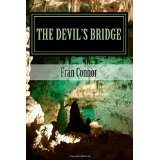
http://www.amazon.com/Devils-Bridge-Fran-Connor-ebook/dp/B00N02YN6C/
Someone to Watch Over Me
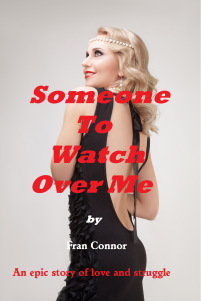
http://www.amazon.com/Someone-Watch-Over-Fran-Connor-ebook/dp/B00XV2MW2I/
Sophia and the Fisherman
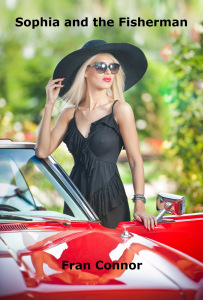
http://www.amazon.com/Sophia-Fisherman-Fran-Connor-ebook/dp/B00VQVQAME/
Visit Fran: http://www.connorscripts.com
Fran Connor was also my guest on CHANGES conversations between authors, an almost-weekly, Google+/Youtube video chat show, on Episode 25. Watch conversations with my previous CHANGES guests any time: http://goo.gl/eX0D8T
OPENINGS 7/8 and beyond! #Authors, especially those in sci-fi/speculative fiction and who blog, learn more about and get yourself on CHANGES, and
#Readers, recommend an #author to be scheduled as a guest: http://goo.gl/1dbkZV
If you’d like to be a Guest Blogger, please visit my Guest Bloggers’ Hall of Fame and learn what’s involved.
Thanks for visiting, commenting, following, and enjoying this site! http://www.sallyember.com
Filed under: Blogging and others' content, G+ HOAs, Opinions Tagged: *CHANGES*, *CHANGES* conversations between authors, Britain, buying ratings, buying reviews, Censorship, compassion, death penalty, Fran Connor, murder, Sally Ember, sexual violence, USA, violence, Violence against women







June 16, 2015
Johnson’s Shut-Ins: Jumping In with Fear, Enjoying the Ride

(unknown person in this photo)
Johnson’s Shut-Ins: Jumping In with Fear, Enjoying the Ride
Some of my clearest memories, among my fondest and most thrilling times, are of the several visits I made while a teen and young adult to this amazing state park in central Missouri. I attended and then worked at several summer camps which made this wonderful location part of our overnight trip schedule, so I was privileged to go there again and again in the late 1960’s and early 1970’s when the water was clean, the river was running high and the place was mostly undiscovered.
What is it? What makes it so special? From a scientific/geologic/historic standpoint, there are these facts:
The story of Johnson’s Shut-Ins starts over a billion years ago when the igneous rocks, pink granites and blue-gray rhyolites, were formed from volcanic activity.
Igneous rock is one formed from molten rock, magma, and other volcanic materials (e.g., ash deposits).
Granite rock (a type of igneous rock) is formed from magma that cooled below the earth’s surface and then was exposed later.
Rhyolite rock (another kind of igneous rock) is formed from magma and volcanic ash and debris flows that spewed out onto the earth’s surface and then cooled.
Above the park the East Fork of the Black River flows through a broader valley formed in dolomite bedrock. Then the river hits the more resistant igneous rock and the valley becomes narrow and steep-sided or “shut in.” Along the banks of the stream, look for the Ozark witch hazel which blooms in late winter and early spring.
http://mdc.mo.gov/discover-nature/places-go/natural-areas/johnsons-shut-ins
There are the natural beauty and sensory pleasures of the cool but not freezing water, the rushing but not crushing rapids, the clean and clear water, the variety of smells, sights and adventures to be experienced which you’d have to go there to know. But, here are some photos and a few stories to help you believe you were there with me.
For the Walkers
For the less adventurous, those who’d rather sunbathe than swim, the large rocks offer plenty of opportunities to lie around and enjoy others’ splashing and yelling without moving much. My friends and I would divide into groups: walkers, floaters, swimmers and jumpers. The walkers usually stopped out and sunbathed a lot and didn’t go as far down the river as the others. Many of them barely got wet. Personally, I didn’t see the point of being a walker, but some people just didn’t want to get wet.
For the Floaters
Floaters enjoyed the water but weren’t great with longer swims and had no interest in climbing and jumping in from higher and higher plateaus. They would use the rapids to shoot down little ladders into shallow pools, climb back up and do that or another section many times and stay in the central “shut-ins” area for hours, whopping, hollering, splashing and laughing. I’d join the floaters for a while, but I felt the need to move on to more exciting parts very soon.
The walkers and floaters could see parts of where the swimmers and jumpers were going, but not all. Mostly, these first two groups were less willing to go deep, go high, go far. Walkers and floaters still had a blast and probably had no care for or interest in what they were “missing” because what they were doing was incredibly fun and went on for many and varied sections of the shut-ins.
For the Swimmers
Some of us swimmers and jumpers would re-visit the shut-ins sections to hang out with our walker and floater friends, eat our lunches, warm up, talk, shoot down the rapids for a while, then swim further on again. We’d do this back-and-forth for hours.
If you can imagine the sounds of the rushing water, the shouts and laughter of the kids and teens, the sweet smells of the trees, water, flowers and plants, the beauty of the rocks and formations and the rush of excitement we’d feel, you have some of the sensory pleasures swimmers and floaters especially enjoyed.
We swimmers, though, just had to keep going. Beyond the shut-ins sections were three ever-larger and deeper pools, kind of like small lakes, culminating in the pool with the three jumping platforms. The feeling of being pushed and pulled around by the rapids in the shut-ins for hours was with us until we got to the third pool. By then, the calm, clear water of the first two pools had changed our vibrations and soothed our nerves.
For the Jumpers
Jumpers are swimmers who can conquer, or jump in with fear. Jumpers had to be strong, enduring swimmers who could tread water, go deep and surface, climb and jump in repeatedly (or at least once) without flagging because there were no lifeguards and no easy way to get rescued if a swimmer or jumper got exhausted.
Some swimmers came through all three pools just for the love of swimming and some came to watch the jumpers. Maybe they were revving up to jump, but many swimmers never did. Or, some jumped, but only from the lowest platform rock (about 6 feet above the water). There was an intermediate platform rock, which we estimated to be about 20 feet above the water, which many jumpers used but most never went higher.
Then, there was the highest jump, from a rock area that was about 40 feet above the water. It was also set kind of far back, so jumpers not only had to be brave enough to climb up (clambering up a narrow trail without steps which was very slippery and had no handholds), foolish enough to jump off from 40 feet high, but also, we had to be skillful enough to jump OUT in order to clear the jutting rocks beneath this platform area so that we would get to the water and not break a body part hitting the rocks first. There was a small area to take a few steps (but not run) before jumping, or jumpers could just propel our bodies forward and out as we jumped: that’s what most did.
NOTES: The first photo, below, which shows a human-made diving board, was not the way it was when I was there. There was no diving board. We had to jump out to avoid those rocks and had no help from an extending board.
I remember climbing up to the highest jumping area for the first time at the age of fourteen, thrilled and frightened in equal measure. When I got to the top, I was so scared I could only sit and watch as several other jumpershurled themselves off the cliff. I let kid after kid go ahead of me, not daring to take a turn.
I felt that I couldn’t do it. I was panting, sweating, shaking from fear. I looked at the climbing trail and knew I couldn’t climb back down, either. It was incredibly treacherous with sliding pebbles, shifting dirt and narrow rock formations that made it barely possible to go up and impossible to reverse direction. There would be no going down except by jumping.
Each jumper hooted and hollered, making it seem so fun, I just ached to do it. But I was immobilized by my terror, hunched down behind the jumping area, for about thirty minutes. Luckily, no one paid me any attention and I could be in my own world, contemplating my fate.
I was up there so long my swimming suit felt dry. Finally, there was no one else up there for a minute. I felt the urge come over me to DO IT. I stood up, my legs shaking. I crept to the edge of the cliff and looked down, checking the exact location of the jutting rocks that I’d only seen from below before. They jutted out REALLY FAR.
This photo shows the perspective of that highest jumping area as I remember it.
I was only 5′ tall. How would I propel myself out beyond them? I imagined breaking my arm or leg, hitting the rocks if I misjudged my jump.
No way. I could do this.
A big whoosh of internal courage rushed into me. Grabbing onto it before it could disappear, I took a few steps back, then raced forward and hurled myself OUT, bicycling my legs as I’d seen others do to get more distance beyond the rocks below me.
It seemed to take forever to reach the water. I had time to think about how long it was taking. But, no one had told me and I hadn’t bothered to notice that I needed to keep my arms and legs close to my body. I hit the water with a smack, my legs slightly open and my arms out to my sides. IT HURT LIKE HELL! My inner thighs were on fire and my inner arms felt as if I’d hit walls with them.
I sunk down further in the water than I wanted to, then frantically kicked to get back to the surface, blowing out water and gasping for breath when I broke clear, hurting all over.
I felt exhilarated! I HAD DONE IT! My friends and a few strangers around me cheered and hollered at me. As my head cleared and the aching subsided, I looked around, smiled, and held up one arm high above my head, fist clenched. YES!
Now that I knew I could do it and had learned that I needed to keep my body more like a pencil after I bicycled out, I was eager to do it again. So, I did.
Several times that day, several times the next day, I clambered up and immediately jumped from that highest point. I learned to love the fall, letting time stretch out. Knowing the entry wouldn’t hurt, that I could get my breath and come up just fine, made it that much more enjoyable.
For several years after that, on each visit, into my early twenties, I made my first jump with tremendous fear and enjoyed the rest. It was one of my favorite things EVER to do.
At each summer’s visit, for my first jump I had to climb up and then let several jumpers go first as I got myself psyched up to jump again. I never stopped being afraid of that height. I just kept cimbing up and jumping anyway, feeling the fear while enjoying the ride.
What Lies Beyond
The Black River goes on from the third pool, but we couldn’t swim or hike any further safely. Some of it looks like this, from above, which seems as if it would be a fun ride down the rapids, like the shut-ins that came before, except there was no way to get back by climbing back up or around and up, the way we did in the actual shut-ins sections.
If you ever want to go
First of all, make sure the Black River is running well: not too high (from flooding) and not too low (from drought). Second, plan to camp out in the park and stay a few days. You’ll love it that much. Bring your own everything; there’s nothing much nearby in the way of restaurants, stores, etc.
The MO State Parks page states:
“This natural area is within Johnson’s Shut-Ins State Park. The 2-mile Shut-Ins trail provides access to the natural area. Inquire at the park office about the hiking trail.
“To reach the park office: from the intersection of MO Highway 21 and MO Highway N north of Pilot Knob (Iron County) go west nearly 13 miles to the park entrance on the left (south). Follow the signs to the park office.
“Swimming is allowed in the shut-ins at your own risk.”
http://mdc.mo.gov/discover-nature/places-go/natural-areas/johnsons-shut-ins
Filed under: Gratitude, Life lessons, Personal stories Tagged: Black River, childhood story, danger, fear, Johnson's Shut-Ins, jumping in, Missouri, nature, river, state park, swimming, water














